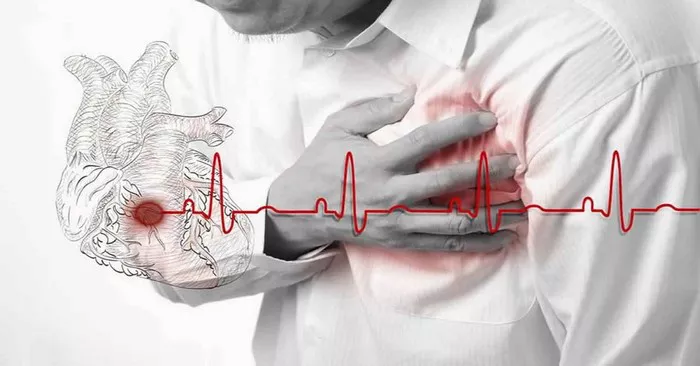Ventricular fibrillation (VF) is a life-threatening cardiac arrhythmia characterized by rapid and disorganized electrical activity in the ventricles, leading to ineffective pumping of blood. It is a medical emergency that requires immediate intervention to restore normal heart rhythm and prevent cardiac arrest. In this article, we will explore the most effective treatments for ventricular fibrillation, including medications, electrical therapies, and other interventions.
Understanding Ventricular Fibrillation
Before delving into treatments, it’s crucial to understand the underlying mechanisms of ventricular fibrillation. The heart’s electrical system coordinates the contraction and relaxation of its chambers, ensuring efficient blood circulation. In VF, this system malfunctions, causing chaotic electrical signals that disrupt normal heart function. This can result from various factors, including coronary artery disease, myocardial infarction, electrolyte imbalances, and structural heart defects.
Immediate Management in Ventricular Fibrillation
When a patient presents with ventricular fibrillation, prompt action is vital. The immediate goals of treatment are to:
Restore Normal Heart Rhythm: The primary objective is to convert ventricular fibrillation to a normal sinus rhythm, allowing the heart to pump effectively.
Maintain Oxygenation and Perfusion: Adequate oxygen supply to vital organs must be maintained to prevent organ damage.
Prevent Recurrence: Measures should be taken to prevent the reoccurrence of ventricular fibrillation and its complications.
Pharmacological Interventions
Antiarrhythmic Medications: Drugs like amiodarone, lidocaine, and procainamide are commonly used to stabilize heart rhythm and prevent VF recurrence.
Electrolyte Correction: Imbalances in potassium, magnesium, and calcium levels can predispose to VF. Correcting these imbalances is essential for effective treatment.
Beta-Blockers: These medications help reduce the heart’s workload and control heart rate, potentially preventing VF episodes.
Electrical Therapies
Defibrillation: The cornerstone of VF treatment, defibrillation delivers a controlled electric shock to the heart, interrupting chaotic electrical activity and allowing the heart to reestablish a normal rhythm.
Implantable Cardioverter-Defibrillator (ICD): For patients at high risk of recurrent VF, an ICD can be implanted. It monitors heart rhythm and delivers shocks as needed to terminate VF episodes.
Cardioversion: In cases where VF is refractory to initial treatment, synchronized cardioversion may be performed to restore normal rhythm.
Other Interventions
Coronary Angiography and Revascularization: If VF is secondary to coronary artery disease or myocardial infarction, coronary angiography and interventions like angioplasty or stenting may be necessary.
Extracorporeal Membrane Oxygenation (ECMO): In refractory VF cases, ECMO can provide temporary cardiac and respiratory support while underlying issues are addressed.
Catheter Ablation: For recurrent VF due to specific arrhythmogenic areas, catheter ablation can be considered to eliminate abnormal electrical pathways.
Post-Resuscitation Care
Following successful treatment of VF, comprehensive post-resuscitation care is crucial. This includes:
Monitoring: Continuous cardiac monitoring to detect any recurrence of VF or other arrhythmias.
Medication Optimization: Adjusting and optimizing medication regimens to prevent future arrhythmias.
Cardiac Rehabilitation: Rehabilitation programs to improve cardiac function, physical fitness, and overall well-being.
Psychosocial Support: Addressing psychological and emotional aspects, as VF and its treatment can be traumatic for patients and their families.
Prognosis And Complications
The prognosis after VF depends on various factors, including the underlying cause, promptness of treatment, and presence of comorbidities. Complications of VF and its treatment can include:
Neurological deficits due to inadequate oxygenation during VF
Recurrent arrhythmias despite treatment
Device-related complications with implantable devices like ICDs
Psychological distress and post-traumatic stress disorder (PTSD) in survivors
Conclusion
In conclusion, ventricular fibrillation is a serious cardiac arrhythmia that requires immediate and effective treatment to prevent cardiac arrest and improve patient outcomes. A multidisciplinary approach involving pharmacological interventions, electrical therapies, and other interventions is crucial for managing VF effectively.
Early recognition, prompt intervention, and comprehensive post-resuscitation care play pivotal roles in optimizing outcomes for patients with ventricular fibrillation.
FAQs
Is atrial fibrillation life-threatening?
Atrial fibrillation (AFib) can be serious and potentially life-threatening, especially if not managed properly. It increases the risk of stroke and heart failure, and it can lead to other complications if left untreated. However, with appropriate medical care and lifestyle changes, many people with AFib can lead normal lives and reduce their risk of serious complications.
What’s going on with the heart tremor?
Heart tremors, also known as heart palpitations or irregular heartbeats, can be a symptom of various heart conditions, including atrial fibrillation. They may feel like your heart is fluttering, pounding, or skipping beats. It’s essential to consult a healthcare professional if you experience heart tremors to determine the underlying cause and appropriate treatment.
Can I exercise if I have atrial fibrillation?
Exercise can be beneficial for people with atrial fibrillation, but it’s crucial to do so under the guidance of your healthcare provider. They can recommend a safe exercise plan based on your specific health condition and fitness level. Generally, low- to moderate-intensity exercises like walking, cycling, and swimming are suitable for most people with AFib, but activities that involve sudden bursts of energy or extreme exertion may need to be avoided or modified.
Regular exercise can help improve cardiovascular health and overall well-being, but it’s essential to monitor your heart rate and symptoms during physical activity.


